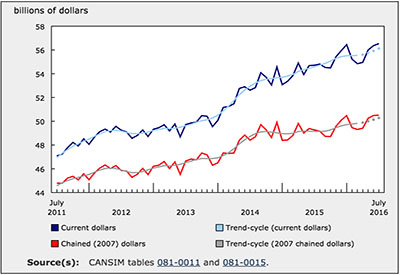10 Tips for Taking Share

For many distributors, the perceived “easy” way to take market share is to compete based upon price. This is under the belief that customers, who are challenged for business themselves, solely desire financial concessions. Customers, recognizing the opportunity, learn to shop their business to more distributors, knowing that increased competition lowers prices and that distributors become “desperate” for the business. An ever-decreasing spiral effect is put into place.
With real growth in every market nominal (unless you’re in an area with something unique to that area), taking share, and keeping it, is the only way to grow.
Taking Share
Here are 10 ideas for taking share.
1. Reconnect to your customers. Customer communication is critical. What are your customers’ needs? Their customers’ needs? How has their business changed? What are they seeing from your competition, and from theirs? Insights gained enable you to better forecast as well as develop new services to meet a changing market.
And existing customers represent your best opportunities for expansion. Are you getting all of the business they have? (Truly? Do you know how to estimate their potential?) Which product categories are you not selling, or not selling them enough?
Reconnecting to the market can also include research to determine the viability, and strategies, of your competitors to help you target where to gain market share. Or consider conducting voice of customer research to better understand customer needs for specific issues. In the words of the English philosopher Sir Francis Bacon, “information is power.”
2. Identify growth niches. In every economy there are segments that grow faster than the overall market. Research your customer base and focus resources on where they are growing. Or consider tangential customer groups. The industrial and institutional sales process are comparable. Residential contractors may do service work. The niche needs to be large enough to impact your business. What else does your customer buy that complements your current capabilities?
3. Expand your contacts. Many companies only know whom they accept the order from or whom they send the invoice to. By extending your communications reach you can influence, and capture, more business. Do you know all of the estimators, project managers and foremen for your contractor customers? What about the engineers and maintenance personnel in the plant? Or how about the architects and engineers who are designing the building? What about safety and training personnel? Each of these audiences may either have business or can influence business. How can you influence the purchasing decision at the architect, engineer (specifier) or developer level? In the words of Jerry Maguire … “show (follow) me the money.” This is where selling gets done and product selection happens.
4. Marketing matters. Ramp up marketing and consider promotional initiatives that are based upon incremental customer performance (but make sure someone controls pricing). Customers have discretion in where they place their business and we live in a world of WIIFM (and remember, contractors pass on the price to their customers and only need you to be competitive while giving them a compelling reason to buy from you.)
5. Promote your unique selling proposition. Do your salespeople understand why customers should buy from you? Do they sell your points of differentiation (or do you hope they do?). Have you given them the tools? Have you trained them? Your brand is important. Define it. Communicate it. Train others on it. Sell it. Consider how you can use metrics and case studies to support your positioning. Be specific.
6. SPAs grow share. SPAs can be a powerful sniper rifle to earn business. A distributor stated to us “getting additional business from existing customers means we have to adjust prices. We are engaging our manufacturers in order to use additional SPA’s.” Effective SPAs are targeted at specific customers or market segments that are critical to your success. Which customers could you target for new, or incremental, business through usage of SPAs? And remember to put the administrative system in place to ensure you claim all that you are owed!
7. Review your pricing strategy. With many companies using price as their market share strategy, you need to ensure that your prices are updated on a timely manner, that your price matrix is accurate and that you are using, and managing, pricing strategically. Many companies also err by allowing sales unrestricted access to pricing and price decision making. Also consider opportunities for ideas such as “loss leaders,” packaged pricing, cross-selling and bundling (with companion products). And remember, the purpose of pricing is to generate a sustainable profit.
8. Being there is half the battle. Many industrials and large contractors cannot afford to manage electrical material inventory. Inventory carrying costs and personnel costs make this prohibitive. But if you have inventory management expertise, offering it to your customers makes you their in-house distributor. Consider it a satellite location. Storeroom solutions is a growth area. Being an insider provides unique opportunities. Offer “free” onsite warehouse services, charge for material used as well as restocking charges for returns, and negotiate a minimum purchase volume agreement. A steady flow of business will ensue.
9. Sell services & value. Do you, and your customers, know all of the services that you offer? That your key suppliers offer? Do you know what your customers value? Conduct an exercise to identify both, then measure your performance on your services, train your sales staff on how to sell the value of them and market them repeatedly to prospects and customers. One company used this approach, talked to customers, and recognized that product availability and delivery were essential to capturing business. They launched a service where they guaranteed product availability and delivery times within defined radial areas. They then used their delivery schedule commitment as a marketing tool to prospective customers within those areas.
10. Feet on the street wins. Consider reallocating personnel resources to revenue producing staff from non-revenue producing areas. More feet on the street enables you to cover more customers, be nimbler while also reducing the number of talented people for competitors to recruit! Consider that you’re playing war… the larger the army, the greater the chance of winning.
Taking market share is about capturing dollars and units. Measuring your business both ways enables you to truly understand business changes and to share this information with your manufacturers. They need to move units to ensure profitable factories, you need to move units to generate profitable sales growth. Together market share can be taken, but it requires commitment, resources and focus.
David Gordon is President of Channel Marketing Group. Channel Marketing Group develops market share and growth strategies for manufacturers and distributors and develops market research. CMG’s specialty is the electrical industry. He can be reached at 919.488.8635 or dgordon@channelmkt.com.
More in CEW by David Gordon:
Innovation Takes Culture, Not Only Books: Part 1
Innovation Takes Culture, Not Only Books: Part 2
Selling Lighting or Selling Data?
Is it Time to Hit the Reset Button?
Boosting Performance at Your Webstore
Amazon Upgrades from Supply to Business
Evolving the Role of Marketing Within Your Distributorship
Strategies in Light Observations: Distributor LED Opportunities
Are You Ready To Sell LEDs Differently?
16 Distribution Industry Trends for 2016
Lighting the Way to Demand Creation
Converting Emails Into Sales Through Thoughtful Communications
Learning from Amazon and Generating Ideas
Turning Your Staff into a Competitive Advantage
Sales and Marketing – How Can Joint Sales Calls Become More Effective
Creating Demand to Drive Profitable Growth
Is Your Company a Kool-Aid Drinker?
What Manufacturers (and Their Reps) Don’t Know About Distributor Joint Sales Calls










